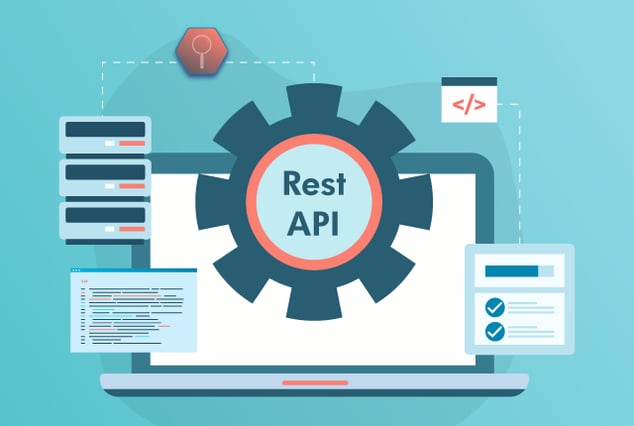
Table Of Contents
With the shift from monolithic to microservice architectures, API testing has become even more crucial. APIs typically function within a single, tightly integrated structure in monolithic systems. However, in microservices, APIs are the communication layer between loosely coupled services, often across distributed environments. This architectural shift increases the complexity of integration, making it essential to ensure that each API operates seamlessly and securely. As a result, having a structured API testing checklist that covers functionality, performance, security, and error handling is more important than ever.
The Objective of an API Testing Checklist: Ensure APIs are reliable, secure, and performant by systematically verifying functionality, security, and scalability. It helps catch bugs early, ensures consistent behavior, and minimizes post-release issues.
Why Do You Need an API Testing Checklist?
With the right API checklist and QA team, project management process, your team can expect various benefits that positively impact your development cycles.
- Reduces Errors and Bugs: Catches issues early, minimizing costly post-release fixes.
- Standardizes the Process: Provides a repeatable framework, ensuring consistency across API projects.
- Improves API Reliability: Validates that the API performs as expected under various conditions.
- Language-independent: QA testers can select any core language when API testing by exchanging data via JSON or XML.
- Enhances Security: Identifies vulnerabilities, ensuring APIs are protected against potential threats.
- Saves Time and Resources: Streamlines testing by focusing on predefined, essential checks.
- Facilitates Collaboration: Aligns development and QA teams with clear testing goals and steps.
- Supports Scalability: Confirms that APIs can handle increased loads as systems grow.
API Testing Checklist: To-do List
- Review Requirements: Understand endpoints, queries, mutations, and expected responses.
- Set Up Environment: Mirror production settings for REST and GraphQL API testing.
- Verify Endpoints: Test various methods, including GET, POST, PUT, DELETE, queries, mutations, and subscriptions.
- Validate Responses: Check HTTP status codes, JSON structure, response schemas, and overall response shape.
- Test Error Handling: Send invalid requests and verify error messages.
- Check Security: Test authentication, authorization tokens, and access controls.
- Load & Performance: Simulate high traffic, measure response times, and evaluate query execution efficiency.
- Run Negative Tests: Send faulty data and missing parameters.
- Verify Rate Limits & Throttling: Ensure rate limiting and throttling mechanisms function correctly.
- Test Data Integrity: Validate CRUD operations and ensure query/mutation consistency.
- Review Documentation: Confirm OpenAPI/Swagger and schema documentation accuracy.
- Monitor Post-Release: Set up logging and real-time monitoring, and alerting to track API health.
Best Practices Followed by QASource Before API Testing
At QASource, we follow a structured approach before executing an API testing checklist. These best practices help ensure accuracy, efficiency, and high-quality results.
-
Understanding Business and API Requirements
- Analyze the API’s purpose, expected functionality, and integration points.
- Review API documentation, including endpoints, request/response formats, and authentication methods.
- Identify key business use cases to prioritize testing scenarios.
-
Setting Up a Stable Testing Environment
- Configure a dedicated testing environment that mirrors production.
- Ensure APIs have access to required databases, services, and authentication mechanisms.
- Use API mocking techniques when dependencies are unavailable.
-
Defining a Robust Test Strategy
- Identify the types of tests required (functional, security, performance, integration, etc.).
- Determine whether the testing scope is a public, private, or third-party API.
- Establish test data requirements and simulate real-world use cases.
-
Implementing Test Automation for Efficiency
- Select automation tools like Postman, RestAssured, and SoapUI.
- Design reusable test scripts for API request validation, response verification, and error handling.
- Integrate API tests into CI/CD pipelines for continuous testing.
-
Security Measures Before Testing
- Validate authentication methods (OAuth, JWT, API keys, etc.).
- Check for potential security vulnerabilities, including SQL injection and cross-site scripting (XSS).
- Enforce role-based access control (RBAC) for API endpoints.
-
Performance and Load Test Readiness
- Define API performance benchmarks (response time, latency, throughput).
- Prepare test scenarios to simulate concurrent users and peak traffic loads.
- Use load testing tools (JMeter, LoadRunner) to assess API stability.
-
Ensuring Proper API Monitoring & Logging
- Implement API monitoring tools like Postman API monitoring and Prometheus + Grafana to detect real-time issues.
- Enable detailed logging to capture API requests, responses, and error messages using tools like ELK Stack and Graylog.
- Set up alert mechanisms for API failures or performance degradation.
Explore our API Testing Checklist to ensure comprehensive test coverage and build reliable APIs.
Types of Tests to Perform on Your APIs
We recommend that you include these types of API tests within your API checklist:
-
Validation Testing
Validation testing is a critical phase that ensures the API meets its intended purpose and functions correctly in real-world scenarios. It verifies that the API performs as expected, adheres to defined specifications, and integrates seamlessly with other components.
Successful validation testing should answer the following questions to confirm a thorough examination has taken place.
- Does the API resolve the addressed issue?
- Does the API behave as expected under normal and edge cases?
- Does the API return the correct and expected response for each request?
- Does the API access only the necessary data, ensuring no security or privacy risks?
- Does the API integrate correctly with other services and components?
- Is the API’s response time within acceptable limits for performance?
- Does the API comply with any defined contract or specification?
- Is the API’s error-handling mechanism clear and effective?
-
Security Testing
Security testing focuses on identifying vulnerabilities in the API to ensure its security. It checks authentication, authorization, encryption, and other measures to prevent unauthorized access and data breaches.
- Is authentication properly implemented for all endpoints?
- Are authorization checks in place to enforce access control?
- Is sensitive data encrypted adequately during transmission?
- Are common vulnerabilities like SQL injection or command injection prevented?
- Does the API limit the number of requests per client to prevent abuse?
-
Mocking/Virtualization Testing
Mocking or virtualization testing involves simulating unavailable services or components to test the API's behavior in isolation.
- Can the API function properly without access to all external services?
- How does the API behave when external systems fail or are unreachable?
- Are mock or virtualized services accurately simulating real-world interactions?
-
Compliance Testing
Compliance testing ensures the API adheres to legal, regulatory, and industry standards. It verifies that the API respects relevant laws like GDPR or HIPAA.
- Does the API comply with relevant data privacy laws (e.g., GDPR, HIPAA)?
- Is the API’s data handling process compliant with industry regulations?
- Are access and data retention policies aligned with legal requirements?
-
Error Handling Testing
Error handling testing ensures the API responds correctly to invalid requests and provides meaningful error messages to users.
- Does the API return appropriate HTTP status codes for errors?
- Are error messages clear and helpful for debugging?
- Does the API handle edge cases and unexpected inputs gracefully?
-
Regression Testing
Regression testing ensures that new changes or updates to the API do not negatively affect existing functionality.
- Does the API still function as expected after changes or updates?
- Are previously passed tests still passing with new updates?
- Has any existing functionality been unintentionally broken by new code?
-
Load Testing
Load testing evaluates how the API performs under varying levels of traffic. It simulates spikes in user activity to determine if the API can handle increased load efficiently.
- How does the API perform under expected load conditions?
- Does the API maintain stable performance during traffic spikes?
- Are response times within acceptable limits under high load?
- Is there any noticeable degradation in performance with increased traffic?
-
Compatibility Testing
Compatibility testing ensures the API works correctly across different platforms, devices, and environments.
- Does the API perform consistently across various operating systems?
- Is the API compatible with different browsers and devices?
- Does the API work with various versions of supported platforms?
-
Boundary Testing
Boundary testing evaluates the API's behavior at the limits of input data to ensure it handles edge cases properly.
- Does the API behave as expected with the minimum and maximum input values?
- How does the API respond to edge cases like empty inputs or invalid data formats?
- Are there proper checks for boundary-related errors?
-
Integration Testing
Integration testing ensures the API interacts correctly with other services, systems, or databases.
- Does the API integrate seamlessly with other systems or services?
- Are interactions with databases and external services functioning as expected?
- Is data shared between the API and other components accurate and consistent?
Conclusion
Effective API testing ensures seamless functionality, security, and performance in modern applications. A thorough testing strategy helps teams detect issues early, reduce risks, and enhance user experiences. By prioritizing comprehensive validation and continuous improvement, businesses can build APIs that are reliable, scalable, and aligned with industry standards. Invest in robust API testing today to deliver high-quality digital experiences.



